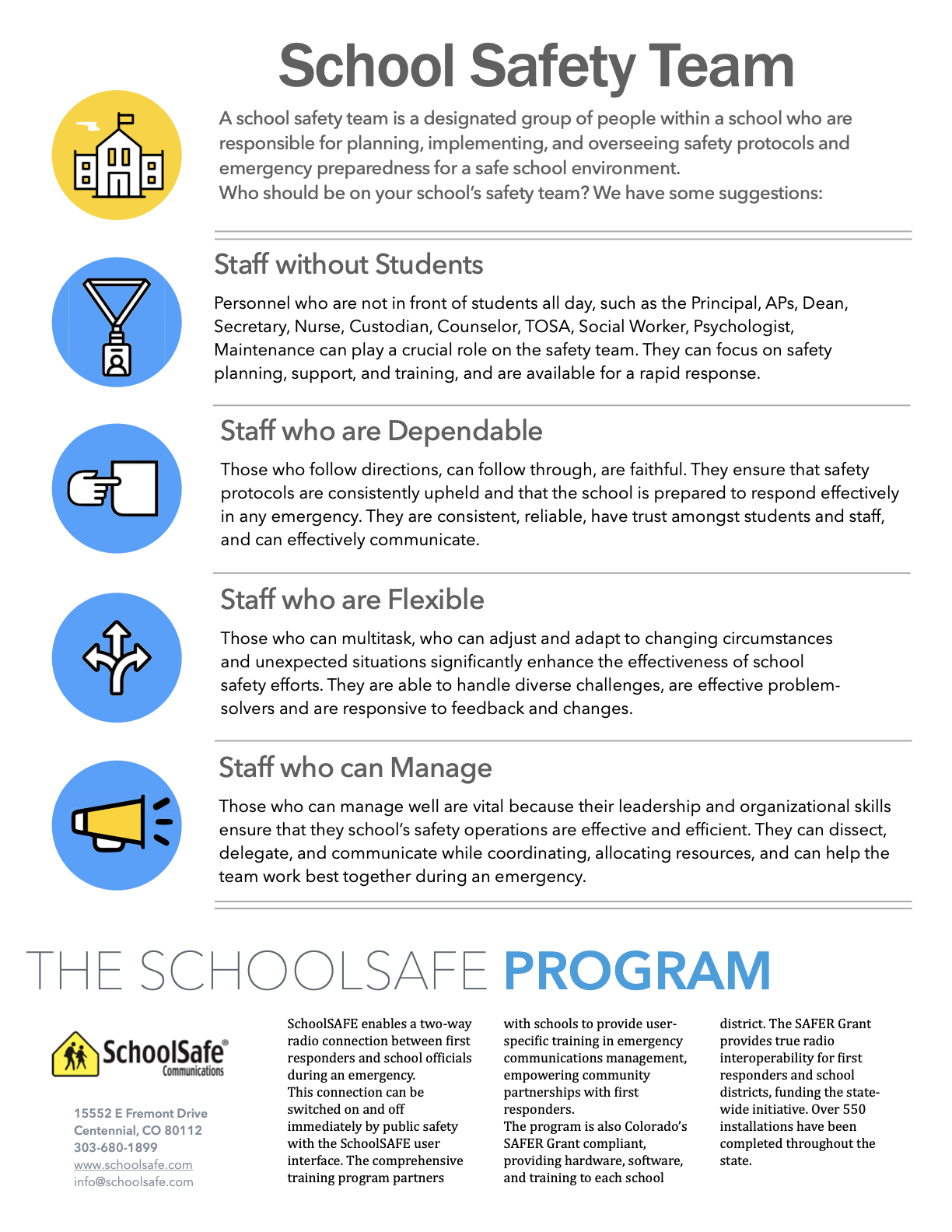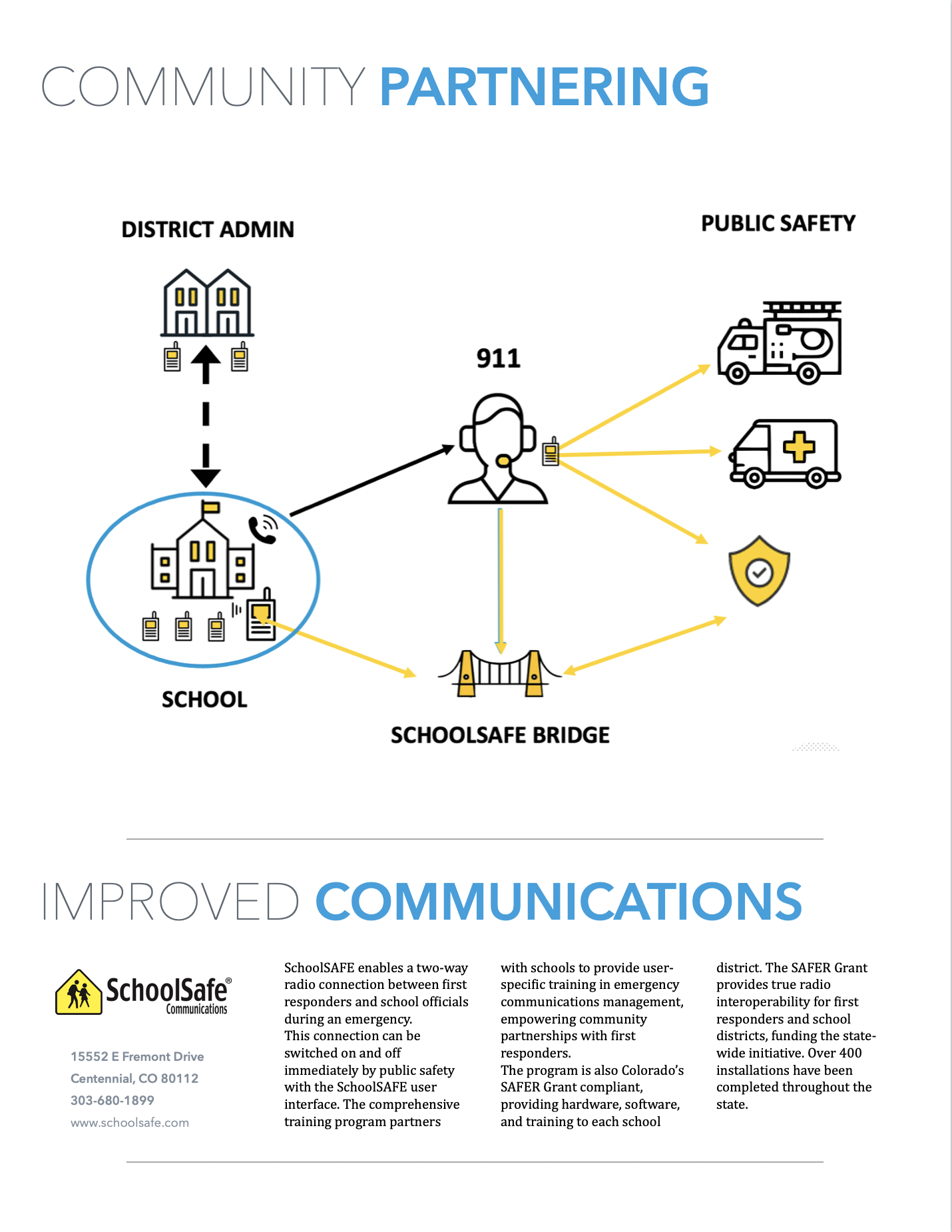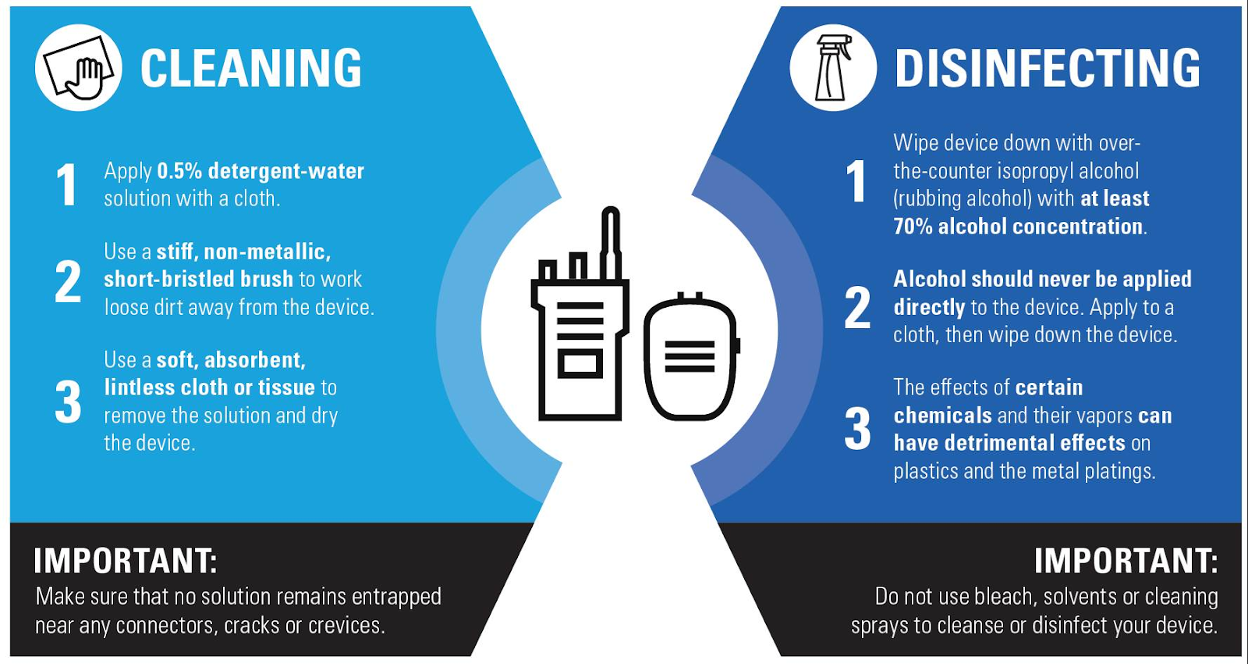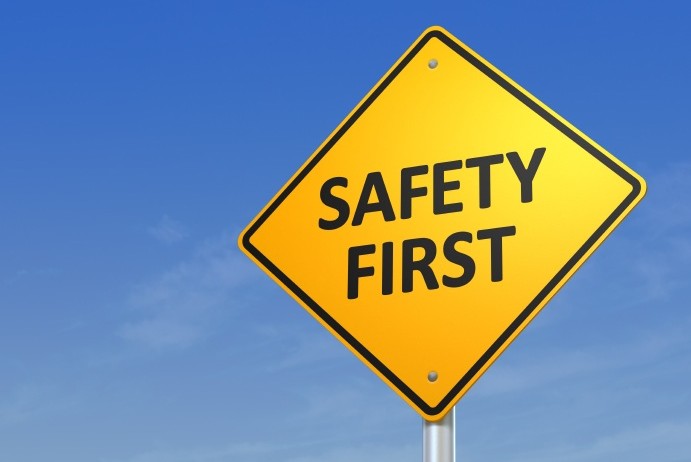In today’s world, ensuring the safety and security of students, staff, and visitors is a top priority for schools. One critical component of this effort is the establishment of a School Safety Team. But what exactly is a School Safety Team, and what do they do? Let’s dive into the purpose, structure, and responsibilities of this essential group.
What is a School Safety Team?
To start, a School Safety Team is a designated group of individuals within a school who are responsible for planning, implementing, and overseeing safety protocols and emergency preparedness. This team typically includes the principal, school administrators, deans, counselors, security personnel, maintenance & custodial personnel, and sometimes even teachers. The primary goal of the team is to manage a safe and secure environment where learning can thrive, free from the fear of violence, accidents, or other all-hazard emergencies that occur at schools every day.
Core Responsibilities of a School Safety Team
Risk Assessment and Planning:
The School Safety Team should conduct a thorough risk assessment of the school’s physical environment and policies or be very familiar with the assessment. This involves identifying potential hazards, such as unsecured entrances, fire risks, or cyber threats. Based on this assessment, the team develops a comprehensive safety plan that addresses these risks and outlines procedures for responding to emergencies, such as lockdowns, evacuations/reunifications, or shelter-in-place orders.
Emergency Exercises and Training:
Regular emergency drills and exercises are a crucial part of the School Safety Team’s responsibilities. The team coordinates and conducts drills for various scenarios, including fire, natural disaster, and active shooter situations. They also ensure that staff and students are well-trained in these procedures, providing clear instructions and fostering a culture of preparedness. Ongoing training sessions for staff are essential to keep everyone informed of the latest safety protocols.
Crisis Management:
In the event of an emergency, the School Safety Team takes the lead in crisis management. They implement the emergency plan, coordinate with local authorities, and ensure the safety of all individuals on campus. The team also communicates with parents and the community during and after an incident, providing updates and instructions as needed.
Promoting a Safe School Climate:
Beyond responding to emergencies, the School Safety Team plays a proactive role in promoting a positive and safe school climate. This can include initiatives like mental health support and conflict resolution strategies. By fostering a supportive environment, the team helps prevent issues from escalating into more serious safety concerns.
Collaboration with Local Agencies:
The School Safety Team often works closely with local law enforcement, fire departments, and emergency medical services to ensure a coordinated response to incidents. Additionally, they may partner with community organizations to provide additional resources, such as counseling services or educational programs, that contribute to the overall safety and well-being of students. SchoolSAFE is a community partner, helping to grow the relationships between schools and their community partners. Furthermore, we help the safety team be as strong as possible, while enabling partnerships for effective communications between local agencies for safer schools.
The Importance of a School Safety Team
Lastly, having a dedicated School Safety Team is essential for any school. It not only prepares the school for emergencies but also actively works to prevent them. By maintaining a strong emergency operations plan, regularly training staff and students, and promoting a positive school climate, the team ensures that everyone on campus can focus on learning.
A Safety Team is a vital part of a school’s infrastructure. Their work behind the scenes helps to create a secure and nurturing environment, allowing students and staff to thrive. Whether it’s planning for potential risks, managing crises, or fostering a safe school climate, the contributions of this team are invaluable to the entire school community.
Want to learn more about SchoolSAFE? Contact us!



